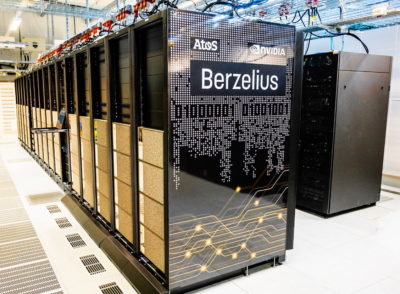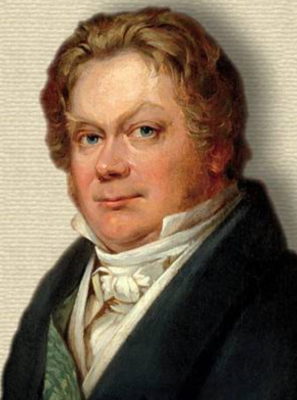A Swedish physician who helped pioneer chemistry 200 years ago just got another opportunity to innovate.
A supercomputer officially christened in honor of Jöns Jacob Berzelius aims to establish AI as a core technology of the next century.
Berzelius (pronounced behr-zeh-LEE-us) invented chemistry’s shorthand (think H20) and discovered a handful of elements including silicon. A 300-petaflops system now stands on the Linköping University (LiU) campus, less than 70 kilometers from his birthplace in south-central Sweden, like a living silicon tribute to innovations yet to come.
“Many cities in Sweden have a square or street that bears Berzelius’s name, but the average person probably doesn’t know much about him,” said Niclas Andersson, technical director at the National Supercomputer Centre (NSC) at Linköping University, which is home to the system based on the NVIDIA DGX SuperPOD.
The BerzeLiUs system will be twice as fast as Sweden’s current top computer and would rank among the top 10 percent on the latest list of the world’s TOP500 supercomputers.
An Ambitious AI Agenda
Andersson and others hope many people will feel ripples from the ambitious work planned for the BerzeLiUs supercomputer. For starters, it may initially tackle as many as seven two-year projects that aim to make leaps forward in areas like wireless communications, cybersecurity, large-scale IoT and efficient programming.

In addition, Swedish researchers can use the system to collaborate with their longstanding research colleagues at Singapore’s Nanyang Technical University (NTU) on six new efforts. They include finding new ways to enhance data analytics with visualization, developing more secure AI algorithms and orchestrating multiple AI models to work as one to schedule the NTU’s campus bus network.
It’s all part of Sweden’s largest private research initiative focused on AI innovation. Known simply as WASP, the Wallenberg Artificial Intelligence, Autonomous Systems and Software Program is a 15-year effort that’s already recruited a faculty of more than three dozen international researchers and engaged 40 companies.
Backing Science for a Better World
The effort is spearheaded by the Knut and Alice Wallenberg Foundation, Sweden’s largest private financier of research. It contributed most of the 5.5 billion kronor ($650 million) for WASP. In a separate gift, the foundation donated 300 million kronor ($36 million) last October to Linköping University to build and run the BerzeLiUs supercomputer for WASP and other researchers.
WASP hosted a virtual event in December that attracted speakers from Ericsson, IKEA, Volvo and SEB Group, one of Sweden’s largest banks. At the event, the foundation’s vice chair, Marcus Wallenberg — scion of the country’s best-known family of industrialists — noted the collaboration between academia and industry is vital for research that makes a positive impact on society. In addition, Wallenberg spoke with NVIDIA CEO Jensen Huang at the inauguration of the BerzeLiUs system (see video below).
There’s little doubt that, like early advances in chemistry, AI is becoming part of our daily lives.
“AI will be everywhere, it will get into many places we can’t imagine at this point,” said Andersson, whose 25-year career at NSC has been devoted to work in high performance computing.
The New Formula: HPC+AI
“HPC traditionally is mostly about simulation; and now, with the advent of AI, simulation becomes an input to new kinds of data analytics that will drive computing to much wider use — it’s a big trend shift,” he said.
Specifically, the BerzeLiUs system will help researchers scale their work to handle the larger datasets and models that power discoveries with AI.

“Most people have been working with single machines that are not as powerful as DGX systems, so our most important task in the coming years is to help develop algorithms that can scale; and there are very large problems that can use many GPU nodes,” he said.
Inside the New Machine
The BerzeLiUs system consists of 60 NVIDIA DGX A100 systems, linked on a 200 Gbit/second NVIDIA Mellanox InfiniBand HDR network. The same network links the processors to 1.5 petabytes of flash memory on four storage servers from DataDirect Networks.
The single InfiniBand network ensures data gets into the system fast, and AI is all about data. “Buying more storage might be the first upgrade we will need because 60 DGX A100 systems can suck up a lot of data fast,” Andersson said.
To get started quickly, NSC asked NVIDIA and Atos, who managed the build and integration, to configure the system’s software. The stack will include the Atos Codex AI Suite as well as access to NGC, NVIDIA’s hub for GPU-optimized software for AI and HPC.
In the end, all the bits and bytes come down to people who, like Berzelius, create advances that drive society forward.
“We need many new explorers in the universe of AI because it will infiltrate and transform all disciplines of research,” said Andersson.
The post Sweden’s AI Catalyst: 300-Petaflops Supercomputer Fuels Nordic Research appeared first on The Official NVIDIA Blog.
